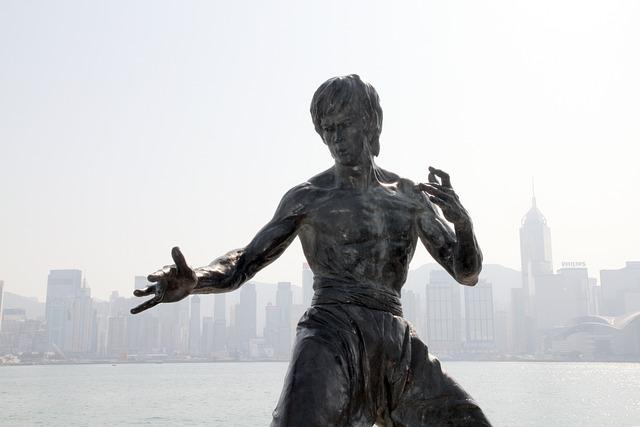In the ever-evolving landscape of American cinema, few voices have resonated as powerfully as that of Spike Lee. A visionary director, writer, and cultural provocateur, Lee has consistently challenged the status quo, reshaping the narrative of Black cinema with an unyielding commitment to authenticity and truth. In this exclusive exploration, we delve into Lee’s transformative journey, tracing the bold strokes with which he has painted a new paradigm for storytelling. As he reflects on his groundbreaking career, we uncover the insights and inspirations that have propelled him to redefine the cinematic portrayal of Black experiences, offering a lens through which we can better understand the complexities and richness of this vital art form.
Pioneering Vision: Spike Lees Impact on Modern Black Narratives
Spike Lee has continuously challenged the status quo, weaving bold narratives that reflect the complexities of Black experiences. His work has become a cornerstone in modern cinema, breaking away from stereotypes and providing a platform for authentic Black voices. Lee’s pioneering vision has not only redefined storytelling but has also paved the way for a new generation of filmmakers who dare to explore themes of identity, culture, and social justice.
- Authentic Storytelling: Lee’s films often delve into the intricacies of Black life, capturing both the triumphs and struggles with unflinching honesty.
- Empowering Voices: By focusing on nuanced characters and real-world issues, Lee has opened doors for diverse narratives that resonate on a global scale.
- Innovative Techniques: His use of unique cinematic techniques and bold aesthetics has set a new standard, influencing countless filmmakers across various genres.

Behind the Lens: How Spike Lee Challenges Conventional Storytelling
Spike Lee is renowned for his ability to shatter the boundaries of conventional storytelling through his innovative use of narrative and visual style. His films often feature bold, unapologetic commentary on social issues, using techniques that challenge and engage the audience. Lee’s work frequently employs unique cinematic elements such as breaking the fourth wall, dynamic camera angles, and vibrant color palettes to create a distinct storytelling experience.
- Non-linear Narratives: Lee often plays with the structure of his stories, weaving timelines and perspectives to provide a multifaceted view of his characters’ lives.
- Strong Visual Symbolism: His films are rich with symbols that resonate with cultural and political significance, adding layers of meaning beyond the dialogue.
- Character-Driven Plots: By focusing deeply on character development, Lee allows audiences to connect with the personal and societal struggles depicted in his stories.
Through these techniques, Spike Lee not only entertains but also provokes thought and discussion, cementing his role as a transformative figure in Black cinema.
Crafting Authenticity: Lees Approach to Cultural Representation
Spike Lee has long been celebrated for his commitment to capturing the nuanced tapestry of Black culture. Through his films, Lee emphasizes the importance of authenticity in storytelling, striving to depict genuine experiences and voices. His approach often involves deep community engagement, ensuring that narratives are rooted in real-life experiences. By doing so, Lee not only tells a story but also creates a platform for underrepresented voices.
- Community Engagement: Lee frequently collaborates with local talent, ensuring stories reflect genuine cultural contexts.
- Realism in Dialogue: He incorporates everyday language and dialects, enhancing the relatability of his characters.
- Historical Context: Many of his works delve into historical events, providing a backdrop that enriches the narrative.
This dedication to cultural representation has helped redefine Black cinema, challenging stereotypes and broadening perspectives. Lee’s films are not just entertainment; they are a cultural dialogue, inviting audiences to explore complex social issues through a lens of authenticity.

Inspiring Future Filmmakers: Lessons from Spike Lees Cinematic Journey
Spike Lee’s cinematic journey serves as a beacon for aspiring filmmakers, particularly those from underrepresented communities. His approach to storytelling is characterized by a fearless exploration of themes such as racial tension, identity, and social justice. Lee’s films like Do the Right Thing and Malcolm X are not just entertainment; they are powerful commentaries on society, offering lessons that transcend the screen.
Future filmmakers can draw inspiration from Lee’s unique style and dedication to authenticity. Consider these key takeaways:
- Embrace Your Voice: Lee has always been unapologetically himself, bringing personal and cultural narratives to the forefront.
- Challenge Norms: His work often defies traditional storytelling conventions, encouraging innovation and boldness.
- Commit to Authenticity: Lee’s commitment to portraying genuine experiences fosters a deeper connection with audiences.
By studying Lee’s body of work, filmmakers can learn to craft stories that not only entertain but also provoke thought and inspire change.

